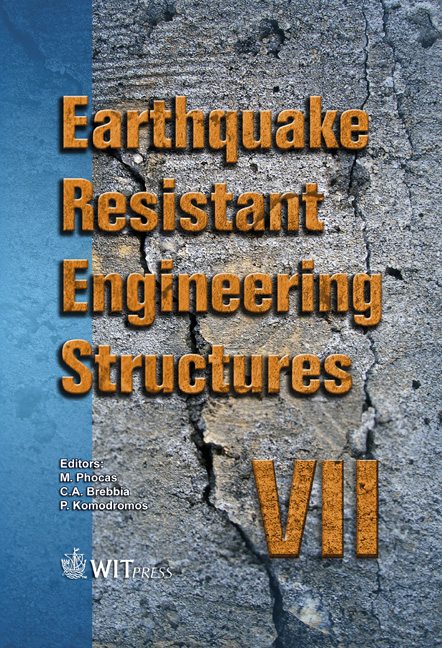Recent Applications Of Italian Anti-seismic Devices
Price
Free (open access)
Transaction
Volume
104
Pages
10
Page Range
333 - 342
Published
2009
Size
2,542 kb
Paper DOI
10.2495/ERES090311
Copyright
WIT Press
Author(s)
M. G. Castellano & S. Infanti
Abstract
In the last three decades anti-seismic devices, in particular those implementing the passive control of structural response through seismic isolation and energy dissipation, have undergone great development, finding many applications in both new and existing structures. Since the 1970s Italy has been giving a strong contribution to said development, so that it soon became the country with the largest number of seismically isolated bridges (over 150 bridges and over 100 km by 1992). The application of passive control techniques in Italian buildings was slow at the beginning; however in last five years, due to the change of seismic code in 2003, many buildings benefited from different types of antiseismic devices. New buildings, in particular strategic buildings such as hospitals, are more and more often protected by seismic isolation, which guarantees their full functionality even immediately after a strong earthquake. Seismic isolation has also been implemented to retrofit existing buildings. More often existing RC framed buildings, in particular schools, have been retrofitted through dissipative bracings, exploiting their capability to reduce the ductility request of structural members and thus the damage. Since the late 1980s, Italian anti-seismic devices have been applied in other countries too – ranging from Mediterranean seismic-prone countries to the USA, from Bangladesh to South America. Some of the outstanding projects in which Italian anti-seismic devices have been used are the Rion-Antirion Bridge in Greece, the Taipei 101 skyscraper in Taipei, the Stonecutters Bridge in Hong Kong, the St. Francis Shangri-La Towers in Manila, etc. Some recent applications of Italian antiseismic devices are described in this paper. Keywords: seismic isolation, energy dissipation, passive control, viscous dampers, steel hysteretic dampers, elastomeric isolators, shock transmission units, seismic retrofit, earthquake engineering.
Keywords
seismic isolation, energy dissipation, passive control, viscous dampers, steel hysteretic dampers, elastomeric isolators, shock transmission units, seismic retrofit, earthquake engineering.





